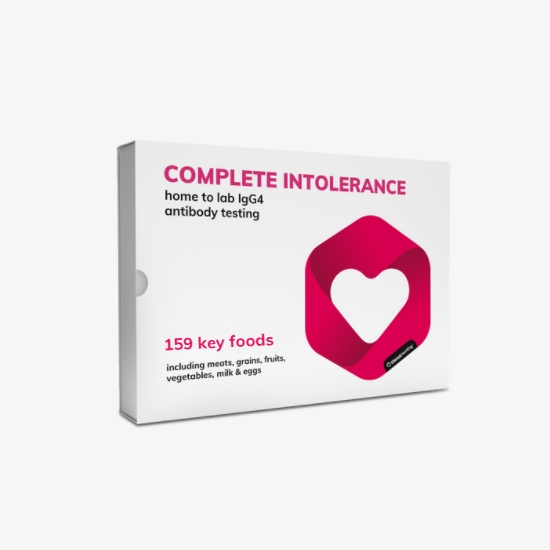There are many health problems that can result in itchy skin. One among them is a food allergy. Some foods cause skin itching when consumed, whether in large amounts or trace amounts. Food allergies result from exposure to specific proteins in foods that the immune system mistakes for harmful substances. In turn, the immune system triggers the production of antibodies to fight this “harmful” substance which results in allergy symptoms.
Food allergies to common allergenic foods can cause itching, including even triggering dermatitis. Some people have severe reactions to certain foods that even touching them triggers skin reactions. When your skin is affected due to allergies, it may result in redness, swelling, a rash, or itchiness. Skin reactions like itchiness can take a few hours to days to appear.
Milk
Many children are allergic to milk. It could be cow’s milk, goat milk, or even breast milk. Whey and casein are the most common proteins found in milk and are the culprits that cause this allergic reaction. Milk allergy is quite different from lactose intolerance. That’s because lactose intolerance doesn’t trigger the immune system like a milk allergy, but causes digestive problems instead. A milk allergy is caused by an allergy to the proteins in milk, whereas lactose intolerance is your body’s inability to process the sugar lactose.
The most common milk allergy symptoms include digestive problems, hives, and wheezing. Some symptoms may take longer to manifest in babies, like loose stool, colic, and abdominal cramps. Many children outgrow milk allergy later in life, but not all do. Milk being a common allergen, it affects about 0.5%-3% of children in developed countries by age 1.
Soy
Even though soy allergy is most common in children and infants, it can also affect adults. Soy allergies affect around 0.5% of the population. Soy is used in baby formula, and other processed foods like edamame, tofu, tempeh, and miso contain soy. Soy allergy is a result of the protein found in this legume.
Of the several allergy symptoms soy allergy can cause, atopic dermatitis is one. It has side effects like itching and inflammation of the skin. You can also experience small raised red bumps on the skin that can be very itchy. If your child has a soy allergy, they’ll probably outgrow them, but not all do.
Tree nuts
Tree nuts are any nuts that grow on a tree, including pecans, almonds, cashews, pistachios, hazelnut, Brazil nuts, and walnuts. It is common to suffer from tree nut allergy as it affects approximately 4.9% of the world’s population {1}. Tree nuts are one of the many food allergies that can easily result in life-threatening anaphylaxis. Other severe reactions to tree nuts include eczema, asthma, and hay fever.
Itchy skin is among the most common symptoms of an allergic reaction in tree nut allergies. The most common proteins in tree nuts that cause an allergic reaction include 2S albumins, legumin, oleosins, and legumin. One can be allergic to some types of tree nuts but not all, but most of the time, due to cross-contamination, it is better to avoid all the tree nuts to be safe.
Eggs
Since egg allergies are common in children, 70% of them are known to outgrow this allergy. An egg allergy is an immune system reaction to certain proteins present in egg whites and egg yolks. The most common egg allergy symptom is hives which cause red, itchy, and swollen skin. People with eczema also report an itchy skin condition after consuming eggs.
While some people may be allergic to chicken eggs only, others need to avoid all types of eggs. It is also necessary to note that certain vaccines may cause problems if you have egg allergies as they contain small amounts of egg proteins. It is necessary to consult your doctor about your egg allergy before getting any vaccines.
Fish and Shellfish
Unlike most allergies, fish allergy develops when one is in adulthood. Up to 40% of people with fish allergy report only suffering from it after they have grown up. An allergy to finned fish like tuna or salmon is quite different to that of shellfish. The main cause of fish allergy is parvalbumins. Some people may be allergic to certain kinds of fish, but not others, but Doctors advise keeping away from all types of fish due to the risk of cross-contamination.
Shellfish are fish with hard shells like lobsters, squids, shrimps, oysters, and crabs. The main cause of shellfish allergy is a protein known as tropomyosin {2}. In most cases, people with fish and shellfish allergies experience symptoms like hives, itchiness, and skin rashes. But in severe cases, others experience anaphylaxis which can be life-threatening.
Wheat
Wheat is among the most cultivated crops worldwide. It is a common ingredient in most baked goods, desserts, and unsuspecting food items like soy sauce and hotdogs. A wheat allergy varies from gluten allergy and celiac disease. In wheat allergy, the reactions one gets are due to the proteins found in wheat. People with asthma and eczema are more prone to developing a wheat allergy.
As an allergen, wheat allergy affects about 1% of children and adults. When you’re suffering from wheat allergy, it is necessary to read labels carefully since wheat is an ingredient in most unsuspecting processed items like soups, salad dressing, and processed meats. Wheat allergy can cause problems like itching, hives, digestive problems, and respiratory issues.
Peanuts
Peanut allergy is the most common and most dangerous food allergy. Specific proteins in peanuts can trigger peanut allergies in various people. According to research, having asthma increases your chances of having severe allergic reactions to peanuts if you have a peanut allergy. Sometimes people with peanut allergies can consume highly processed peanut oil, but not cold-pressed ones. Otherwise, it is wise to avoid all forms of peanuts so as not to get any symptoms.
Peanut allergy symptoms include skin rashes, wheezing, swelling under the skin, digestive issues and shortness of breath. However, in severe cases, peanut allergy can cause anaphylaxis, a life-threatening symptom. Besides getting peanut allergy symptoms from eating peanuts, the same reaction can happen from inhaling peanut dust, peanut oil or cross-contamination from other foods.
Sesame
Sesame seeds are the ninth most common cause of food allergy. The symptoms of sesame allergy can range from mild skin rashes to severe anaphylaxis. Sesame is used in oils, cosmetics, food, medicine, and pet food. Check food labels closely to spot sesame as an ingredient.
Tomatoes
If you’re sensitive to Balsam of Peru, it’s most likely that tomatoes will trigger contact dermatitis. Tomato allergies cause itching and hives. Sometimes they cause these symptoms because of oral allergy syndrome (OAS). If you get an itchy mouth and skin after eating tomatoes, you’re probably suffering from OAS, which is a cross-reactivity of allergens found in some plants and pollen. If you are allergic to tomatoes because of the Balsam of Peru, then you’ll also have the same reaction to spices like cinnamon, cloves, and vanilla.
Citrus fruits
Citrus allergies mostly affect the mouth, tongue and lips, causing them to itch. If you are allergic to citrus fruits, it’s due to cross-reacting allergens like in tomatoes leading to OAS. If you’re also allergic to Balsam of Peru, you should also avoid citrus fruits. It causes dermatitis flare-ups as it comes second after tomatoes which tend to cause the most flare-ups.
Foods with nickel
Even though we know nickel to be in jewellery, you can also find it in foods like beans, peas, lentils, soya beans, whole wheat bread, oats, and some canned foods. The most prevalent symptom of nickel allergy is a skin rash on the hands.
Spices
Even though it might come as an uninvited shock to many, spices can also cause itchiness. Spice allergies can result in skin rashes and itching. They can also cause itching in the mouth, primarily due to OAS.
Treatment for itchiness caused by foods

First off, you need to determine the real cause of your itchiness. If it’s because of a certain food, you can take an Allergy Test to prove your theory further. Before you take an allergy test, it is best to consult with your doctor to rule other culprits out.. There could be other underlying illnesses causing the same itchiness symptoms you’re getting. But once everything’s out on the table, take your test and prove which foods you need to eliminate from your diet.
Final thoughts on foods causing itchiness
Itchiness is a common symptom of food allergy. After consuming certain foods, you might need to take an Allergy Test if you get these symptoms. If your symptoms seem to overlap with those of food intolerance, you can also take an Allergy and Intolerance Test that checks for both. You won’t regret getting this knowledge. Sometimes food allergies can be severe, putting your life at risk. Knowing which foods you eliminate from your diet is best before it gets too complicated.
References
- Geiselhart, S., Hoffmann-Sommergruber, K., & Bublin, M. (2018). Tree nut allergens. Molecular immunology, 100, 71–81. https://doi.org/10.1016/j.molimm.2018.03.011
- Pedrosa, M., Boyano-Martínez, T., García-Ara, C., & Quirce, S. (2015). Shellfish Allergy: a Comprehensive Review. Clinical reviews in allergy & immunology, 49(2), 203–216. https://doi.org/10.1007/s12016-014-8429-8

















